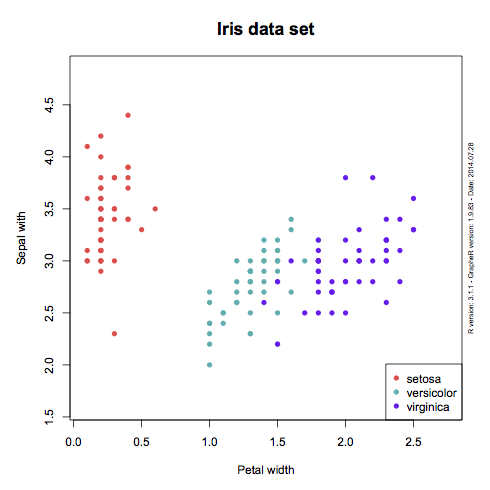


Other options are "rle", "lzw", "jpeg", "zip", "lzw+p" and "zip+p". This function allows you to set the compression type, which defaults to "none", with the compression argument. There are so many questions like this one - standard procedure: melt (from reshape2) dataframe to long format, then you can set aes (xnumber,yvalue,fillvariable) where variable will indicate yresult or xresult CMichael at 10:43 2 Well, read the documentation or look at one of the tutorials. Last, you can save a plot to TIFF (Tagged Image File Format) with the tiff function. Third, you can save a plot to BMP (Windows bitmap) with the bmp function. Second, for saving plots in JPEG, you can use the jpeg function, which also allows you to set the quality of the image as percentage with the quality argument (75% by default). This image file format is known to weight less than JPEG with better quality, as it supports transparent backgrounds.
#R studio commands to make a bar graph portable
If you set the graphic device to a high-resolution ( res = 200), you will need to modify height and width of the corresponding function and the margins of your plot with the par function in order to avoid losing the original formatting and layout.įirst, the png function allows you to save an image to a Portable Network Graphics file. Note that you can convert inches to centimeters dividing by 2.54. Width = 8, height = 7, # Width and height in inchesĬolormodel = "cmyk" # Color model (cmyk is required for most publications) barchart(carstype) If you want to dress the chart up for presentation, you can use some additional arguments to the barchart command as shown below. If you just want a quick glimpse at the variable, this will usually do the trick.
#R studio commands to make a bar graph pdf
You can also change the width and height (in inches) of the output plot, the paper and point size, or modify the background color, as the PDF plot will have a transparent background, or the color model, among other graphical parameters. We can use the barchart()command in the lattice package to make a simple frequency barchart for the variable type.

However, if you need to edit the image after saving in order to add some decoration or perform some modifications you should use SVG.įirst, in order to save a plot as PDF in R you will need to open the graphics device with the pdf function, create the plot you desire and finally, close the opened device with the dev.off function. The PDF format for saving images is the most used for creating scientific documents, as they are easy to add to LaTeX and maintain the resolution even if you zoom in. The argument method allows you to select between "circle" (default), "square", "ellipse", "number", "shade", "pie", and "color".Save plot in R as PDF, SVG or postscript (PS) Create a bar graph for a different (categorical) variable. See the relevant part of the guide for better examples. To get R (or any software) to create this plot (or do anything else, really), there are two. You can use the colorRampPalette function to generate color spectra. A short list of the most useful R commands A summary of the most important commands with minimal examples. The basic command is barplot () and there are many potential parameters that can be used with it, here are some of the most basic: barplot (x, names.arg, beside, horiz, col, xlab, ylab, main, legend. Stars = TRUE, # If TRUE, adds significance level with starsĬi = TRUE) # If TRUE, adds confidence intervals Jiggle = FALSE, # If TRUE, data points are jittered Lm = FALSE, # If TRUE, plots linear fit rather than the LOESS (smoothed) fitĬor = TRUE, # If TRUE, reports correlations Method = "pearson", # Correlation method (also "spearman" or "kendall") Scale = FALSE, # If TRUE, scales the correlation text fontĭensity = TRUE, # If TRUE, adds density plots and histogramsĮllipses = TRUE, # If TRUE, draws ellipses Smooth = TRUE, # If TRUE, draws loess smooths The pairs.panel function is an extension of the pairs function that allows you to easily add regression lines, histograms, confidence intervals, … and customize several additional arguments. The package pysch provides two interesting functions to create correlation plots in R.


 0 kommentar(er)
0 kommentar(er)
